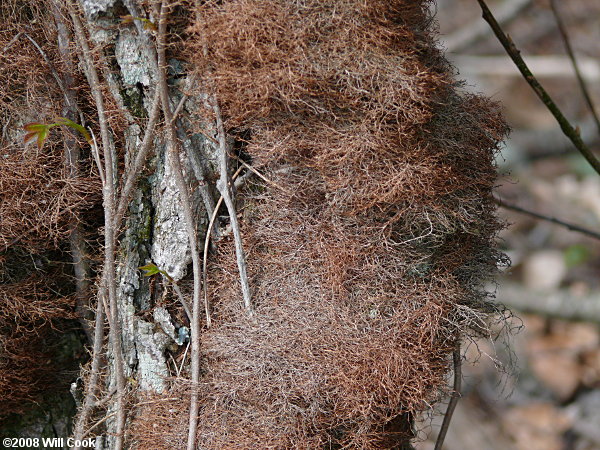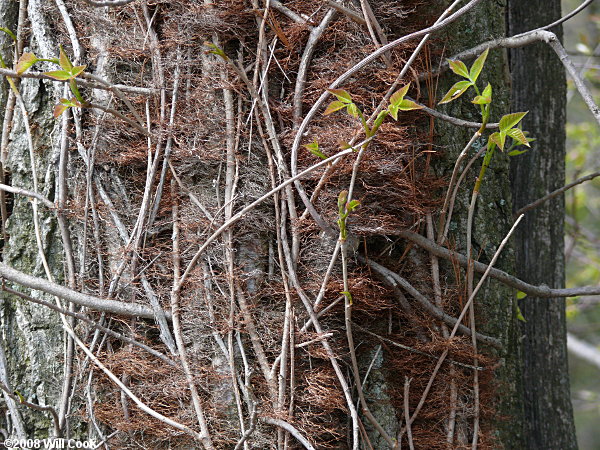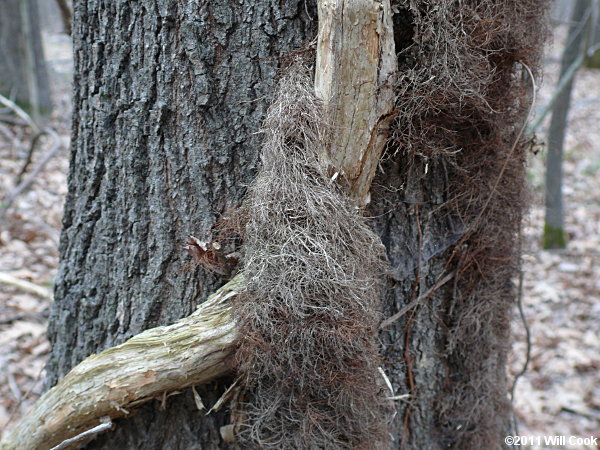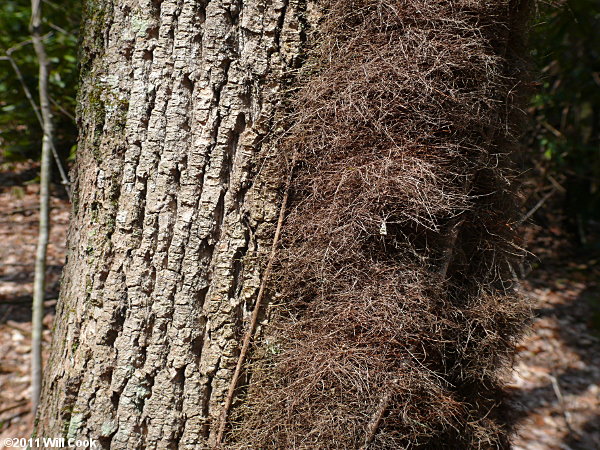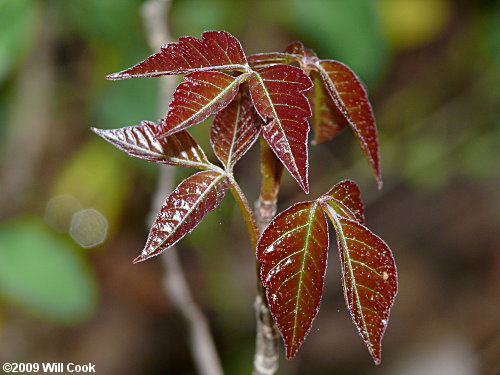
| Poison-Ivy is perhaps our most common native woody vine. All parts of the plant cause severe skin irritation in most people. Emerging leaves are reddish. It is quite ornamental in fall, too, when the leaves turn brilliant shades of red and orange. Durham Co., NC 4/11/09.
| 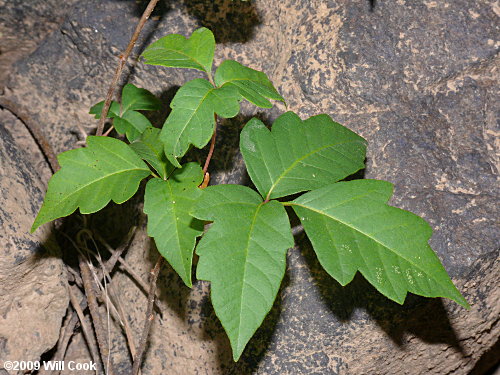
| The leaves have three leaflets and are arranged alternately on the branches. One distinctive feature to look for is that the central petiolule (the stem leading to the central leaf) is longer than the adjacent petiolules. Poison-Ivy is usually easily recognized since it's our only vine with 3-parted leaves. Formerly called Rhus radicans. Durham Co., NC 8/23/09.
| 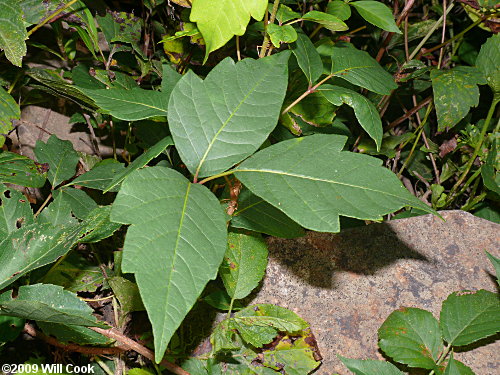
| Caterpillars of several species of attractive moths feed on leaves of Poison-Ivy and Poison Sumac, including Beautiful Eutelia and Eyed Paectes. Durham Co., NC 8/23/09.
| 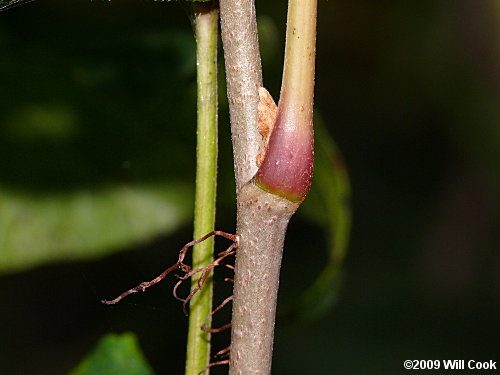
| Petiole bases are often red. The leaf buds are naked (lacking scales) and covered with short tawny hairs. Durham Co., NC 8/23/09.
| 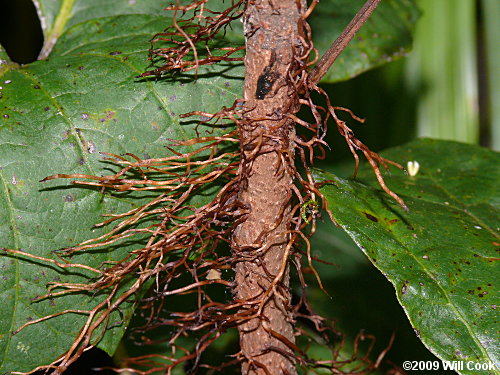
| The hairy aerial rootlets, which often adhering to tree trunks, are distinctive and help identify Poison-Ivy in winter. Durham Co., NC 8/23/09.
| 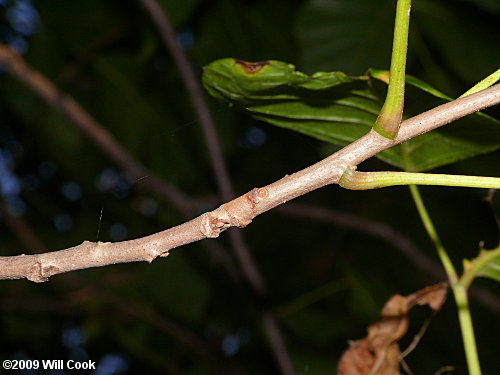
| Durham Co., NC 8/23/09.
|
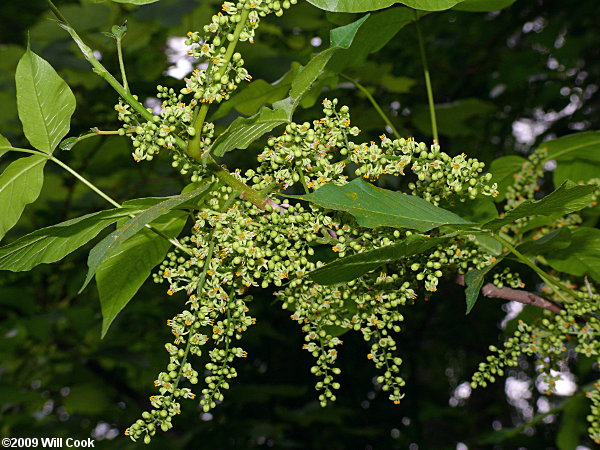
| In full bloom. The numerous flowers are small and greenish. Chapel Hill, NC 5/2/09.
|
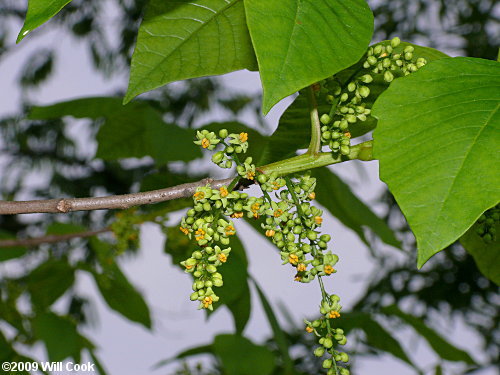
| Chapel Hill, NC 5/2/09.
| 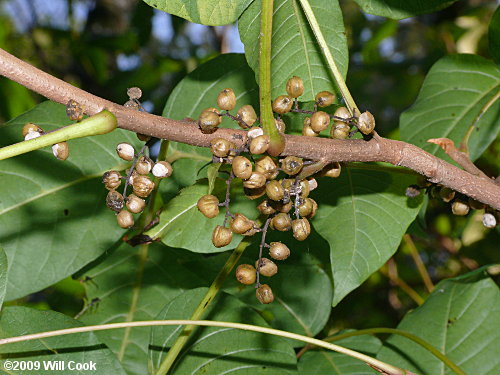
| The small greenish flowers are followed by tawny-whitish fruits (drupes), which are a favorite food of birds. Durham Co., NC 8/23/09.
| 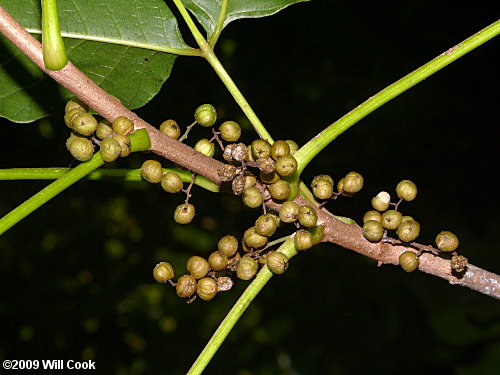
| Durham Co., NC 8/23/09.
| 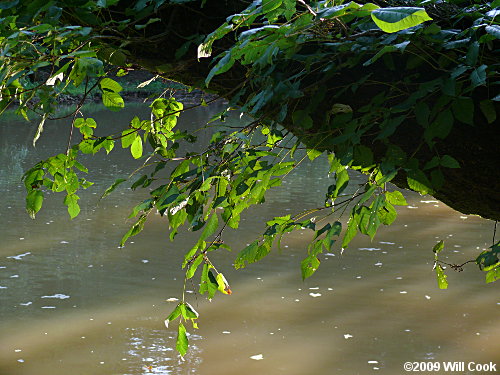
| Poison-Ivy often grows densely along riverbanks. Durham Co., NC 8/23/09.
|
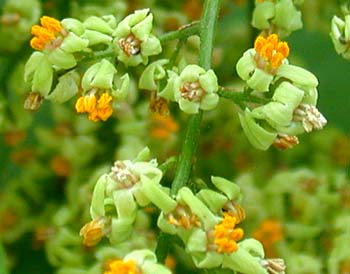
| Flower detail. Orange Co., NC 5/9/04.
| 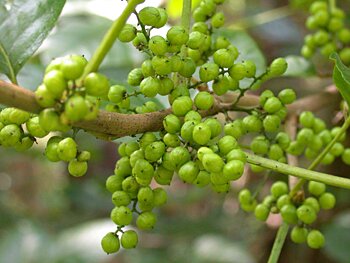
| Unripe drupes. Durham, NC 6/5/03. The similar Atlantic Poison-Oak (Toxicodendron pubescens) is most common in the Sandhills. It differs in that its leaves and drupes have velvety pubescence and it only has a shrub form (Poison-Ivy is normally a vine, but can grow like a shrub).
| 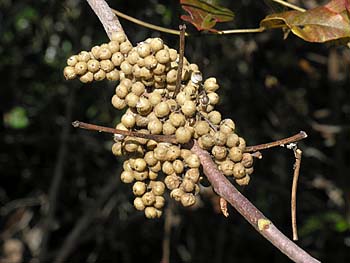
| Ripe fruits. Columbia, NC 11/1/05.
| 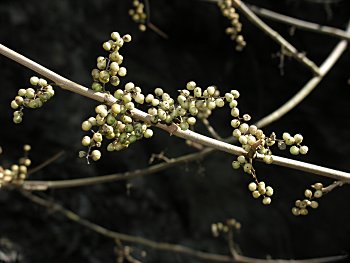
| Carroll Co., VA 10/29/06.
| 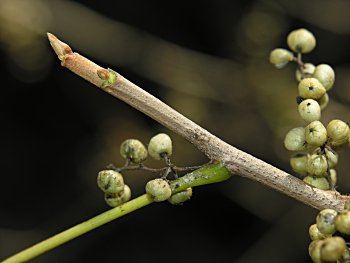
| The buds and branch tips are velvety-pubescent. Carroll Co., VA 10/29/06.
| 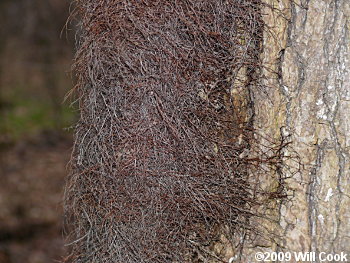
| Large vine growing up a tree. The bark of the vine is usually covered by dense aerial rootlets. Orange Co., NC 1/11/09.
|
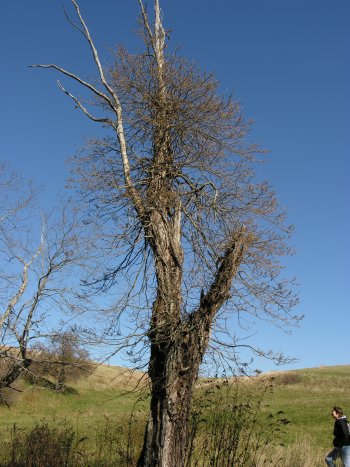
| Vines can get very large, taking over dead trees entirely. This one must be at least 30 feet high. Branches of Poison-Ivy can spread laterally 8 feet or more from the trunk. Carroll Co., VA 10/29/06.
|
More information:
kingdomPlantae.net
NC State - Poisonous Plants
Virginia Tech Dendrology
USDA PLANTS
Recommended Tree, Shrub, and Woody Vine Identification Guides
|
|

















